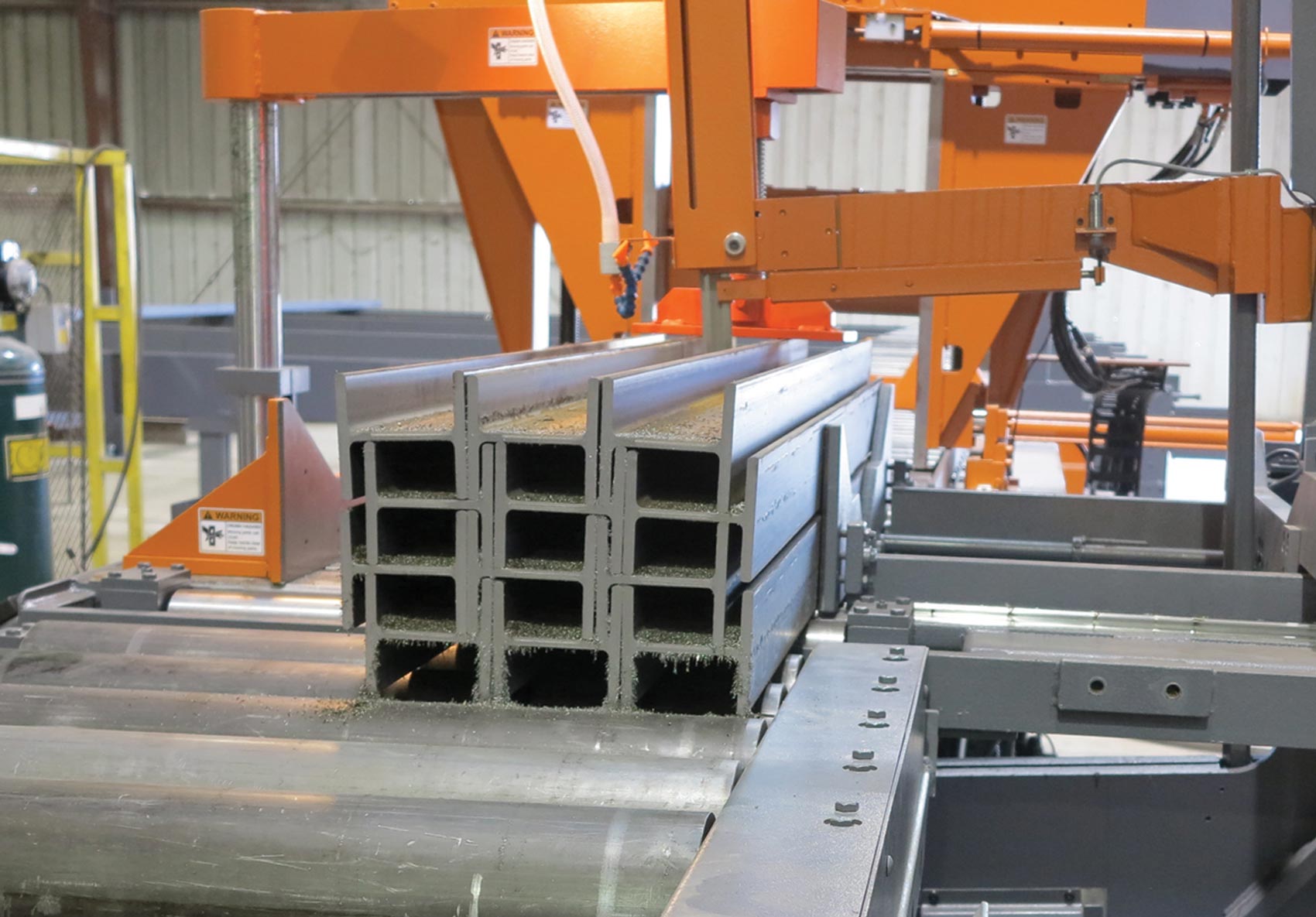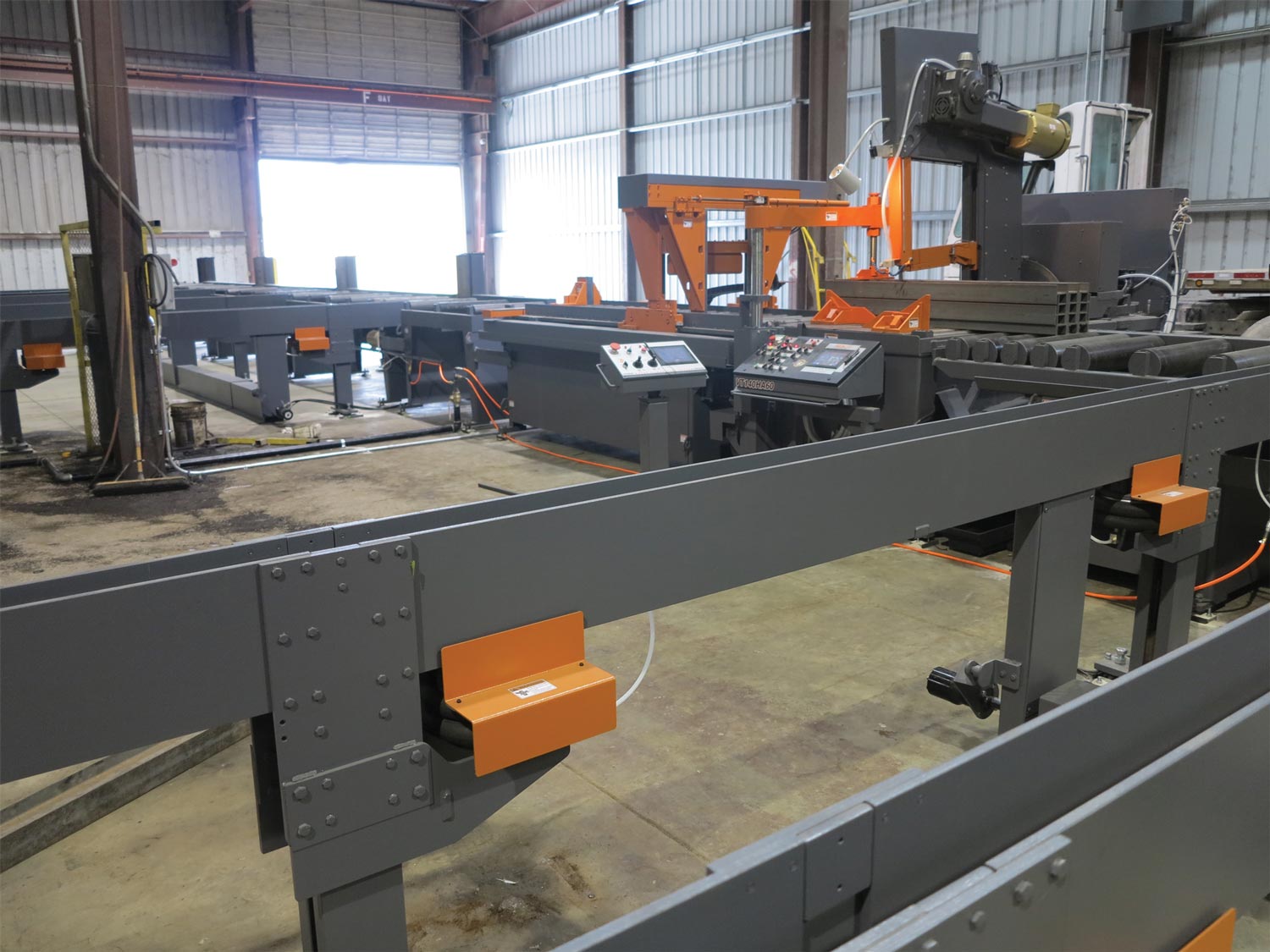Sawing

nventory cannot sit idle at Steel and Pipe Supply’s four service centers, which run 13 saws. “Your best money maker is to keep that steel moving,” says Ed Bare, service center manager, Catoosa, Oklahoma. “We need to get the steel on and off the saws quickly. The in- and out-feed step of our cutting process is crucial.”
Steel and Pipe Supply most recently purchased an HE&M WF190 saw that can cut 40-in.-wide steel beams. “We bought the saw from HE&M but decided to have a different manufacturer make the in-feed and out-feeds to save on costs. It turned into a disaster,” says Bare. “We had to shut down cutting operations [on that saw] while HE&M came in and retrofitted it with their feeds. After that, we were immediately up and running.”
Steel beams are not easy to maneuver. Steel and Pipe Supply’s skilled operators use overhead cranes to move the beams around the shop. HE&M’s automated in-feed and out-feed design allows operators to place the beams directly onto feed tables and hit go. “We have guys that gather the material and set it all onto conveyors,” Bare says. “An operator moves it in, cuts it and moves it out. Before using HE&M’s feed systems, the crane operator had to gather the beams and set them on the floor near the saw, then pick them up again and set them onto rollers [on the conveyor that feeds the beams into the saw], and finally, move the beam back off those rollers and onto the floor. It was double handling and double the time.
“Without an in-feed and out-feed, the saw operator has to keep the crane right there next to the saw to take beams on and off,” he continues. “The entire process was a crane hog. By having to sit there right by the saw, the crane itself blocked the rest of our inventory—it wasn’t an ideal setup.”
Common conundrum


(Top) HE&M provides the right material handling accompaniment to saw cutting cycle times. (Bottom) Transfers and powered roller tables move material efficiently.
(Above) HE&M provides the right material handling accompaniment to saw cutting cycle times. (Left) Transfers and powered roller tables move material efficiently.
 The in- and out-feed step of our cutting process is crucial.
The in- and out-feed step of our cutting process is crucial. 
“Table rollers and other mechanisms that are engineered insufficiently are doomed to fail,” he continues. “Sagging roller beds are often the actual cause of crooked cuts.” Inferior quality components end up failing and cost the user more in the end.
An automated solution worked best for Steel and Pipe Supply, but not every shop requires the same fix. “Careful analysis of a customer’s needs, both current and future, is critical to the overall success and ROI of every budget,” Beha says.
Improvements never end for PLC touchscreens, sensors, saw features, and computer programs that integrate the control, operation and even preventative band saw and material handling maintenance. HE&M continues to research and test new features as well as designs. According to Harris, there are actually two forms of Industry 4.0: the American version and the German version. “The American version refers to collecting, analyzing and using that data to make informed decisions. The German version involves developing the ability to be flexible enough in operations to enable throughput of lot sizes from one to 2,000 parts,” Harris says. “The ability to operate in such a fluid environment allows more efficient operations overall. This concept requires new thinking in designing equipment and controls.”

Each piece of HE&M equipment is also backed up by parts and service as needed for HE&M saws and other components. “Because we manufacture our saws in the U.S., there are no oceans between the customer and the designer, parts or service,” Beha says. “And technical support is available via documents, videos, phone calls or personal visits from our service technicians or engineers.”
Robust support is a good fallback for Steel and Pipe Supply and other customers that run operations nonstop. “Sawing is a priority and we try our best to keep our saws fully staffed so we can meet customer demand,” Bare says. “Even through COVID-19 we’ve kept our saws going. We’re not making money if we’re not shipping tons.”